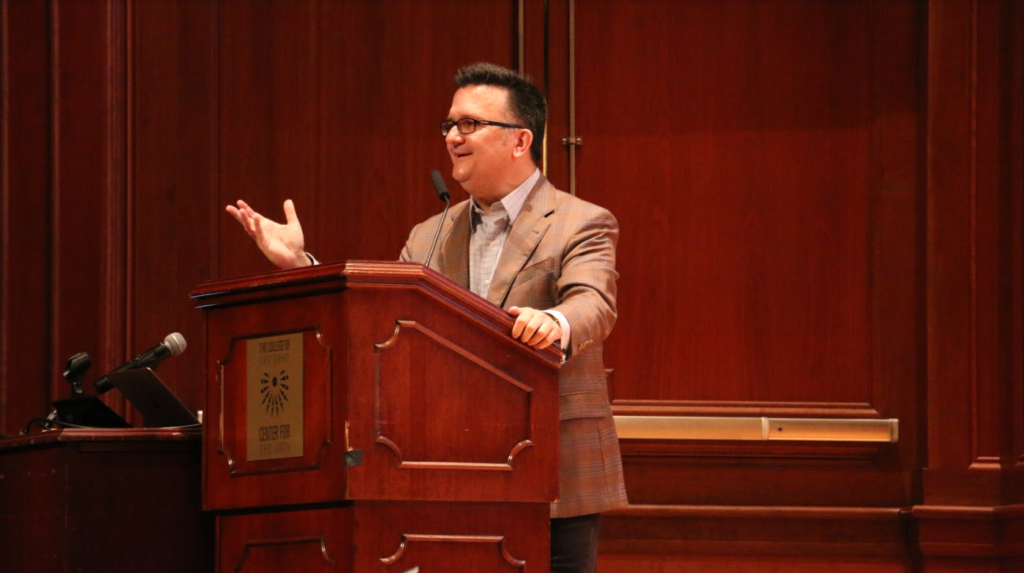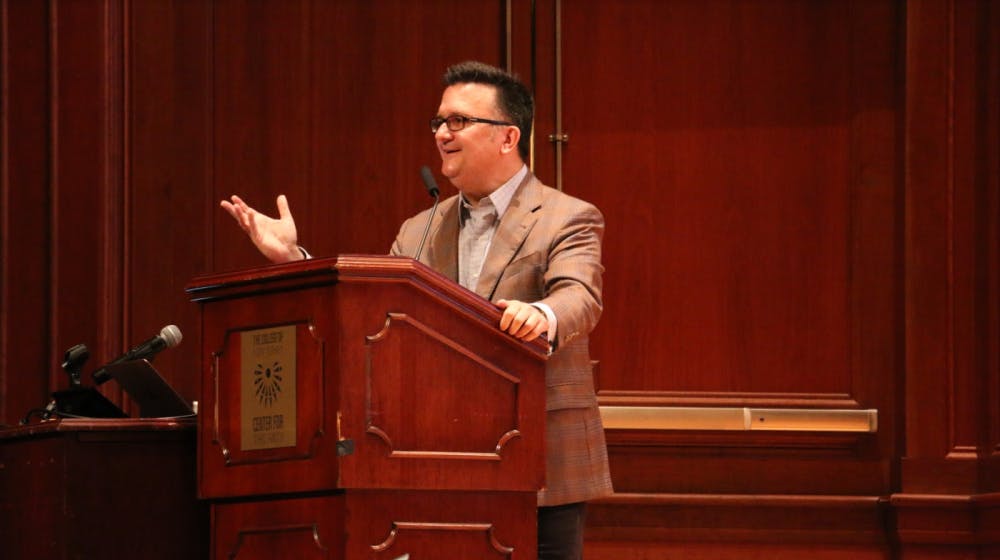By Claire Joanson
Correspondent

Music fans of all ages walked out of Mayo Concert Hall with a better understanding of the magic behind one of the Beatles’ final albums — “Abbey Road.”
Kenneth Womack, an established historian, author and professor of English at Monmouth University, gave a presentation displaying his specialized knowledge in literature, creative writing and the fab four.
Within his hour-long presentation on Oct. 29, the author delved into the band’s creation of the album.
On Oct. 15, Womack saw the release of his latest book, “Solid State: The Story of ‘Abbey Road’ and the End of the Beatles,” which comes during the 50th anniversary of the album’s release. Throughout his presentation, Womack focused on the “Abbey Road” medley, the eight-song collection found on side B of the record.
“The medley is essentially a selection of songs in a suite that concludes their career, so it has a very powerful place in their story,” Womack said.
This medley, often referred to as “The Long One,” during recording, is the last time that all four members of the Beatles worked collectively on an album.
The set of songs marked the end of the cultural movement that defined a generation. Womack discussed both the social and technical influences that allowed “Abbey Road” to become the record that it did.
He emphasized the importance of George Martin, often called the “fifth Beatle,” who worked with the band members throughout their career to produce, mentor and mix their albums. He helped the Beatles resolve the issues they had when working together on previous albums in order to create a cohesive body of work that would eventually become “Abbey Road.”
The author dissected technical layers of the famous tracks that make up the medley, such as the wind-up piano instrumental that appears on “You Never Give Me Your Money” or the similarities between the Beatles’ “Sun King” and Fleetwood Mac’s “Albatross.”
“Abbey Road” differed from albums before it, as it offered a more studio-bound sound enhanced by the new recording technology of the time, such as the EMI TG12345, a solid-state mixer that revolutionized the Beatles distinct sound.
To supplement his points, Womack played multiple clips from the album, as well as scraps of songs unavailable on common streaming services.
“Because this is TCNJ, I’m going to give you guys a special treat, which you’ve heard, but never like this,” Womack said just before playing an acoustic demo in blues of John Lennon’s “Watching the Wheels.”
The example was just a glimpse of Womack immersion in the study of the band through publishing many works on the subject.
Jack Ramina, a freshman mathematics major, is enrolled in the “Beatles and Their World” First Semester Program at the College. Taught by professor David Venturo, the course explores both the history and global impact of The Beatles. Students in this FSP were many of the members of Womack’s audience.
“I enjoy learning how the music was created as a musician myself,” Ramina said.
After his demonstration, Womack took questions that engaged many of the older and younger music lovers in the audience. The Beatles fans rejoiced over the simple pleasure of listening to the sounds of the past, which continues to reverberate in culture today.
“Personally, I thought it was very insightful,” Ramina said. “It was nice to get an outside perspective other than from what we have just been learning in class.”







